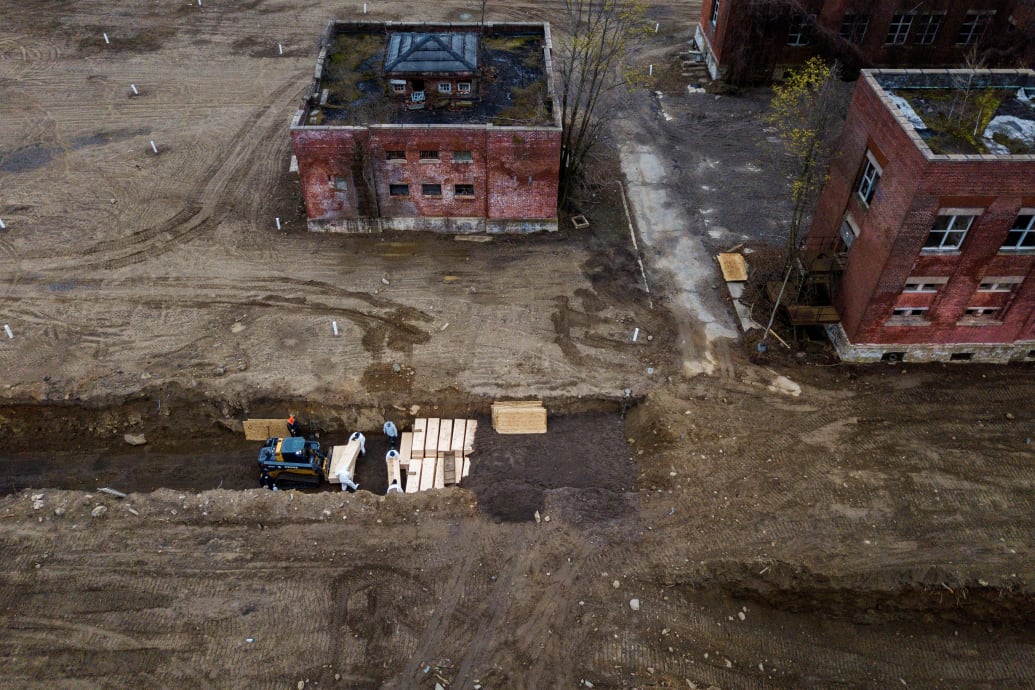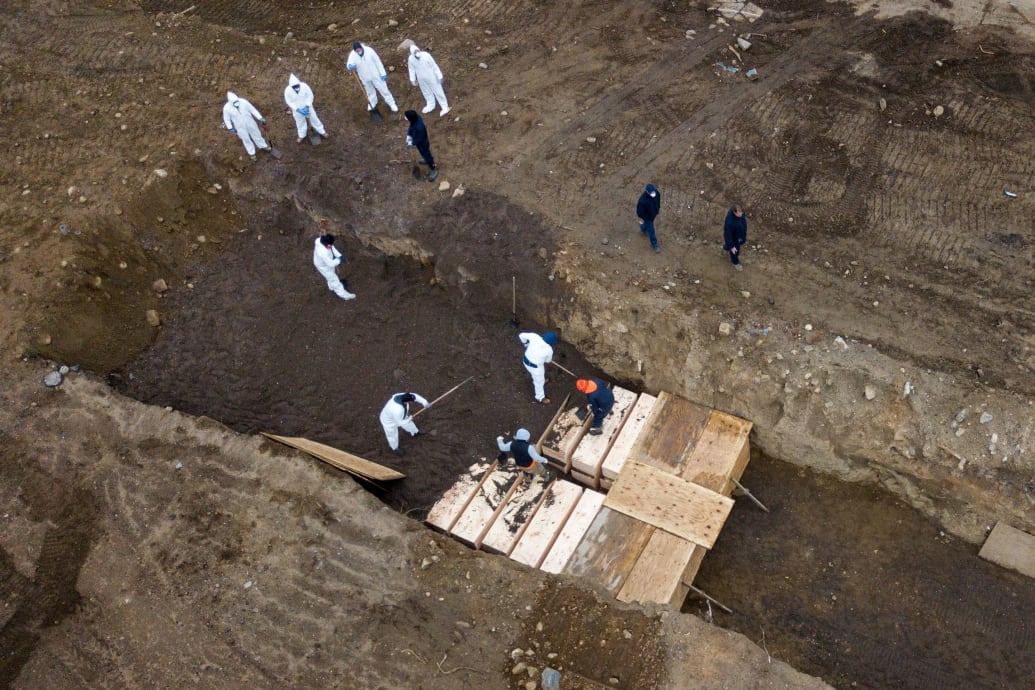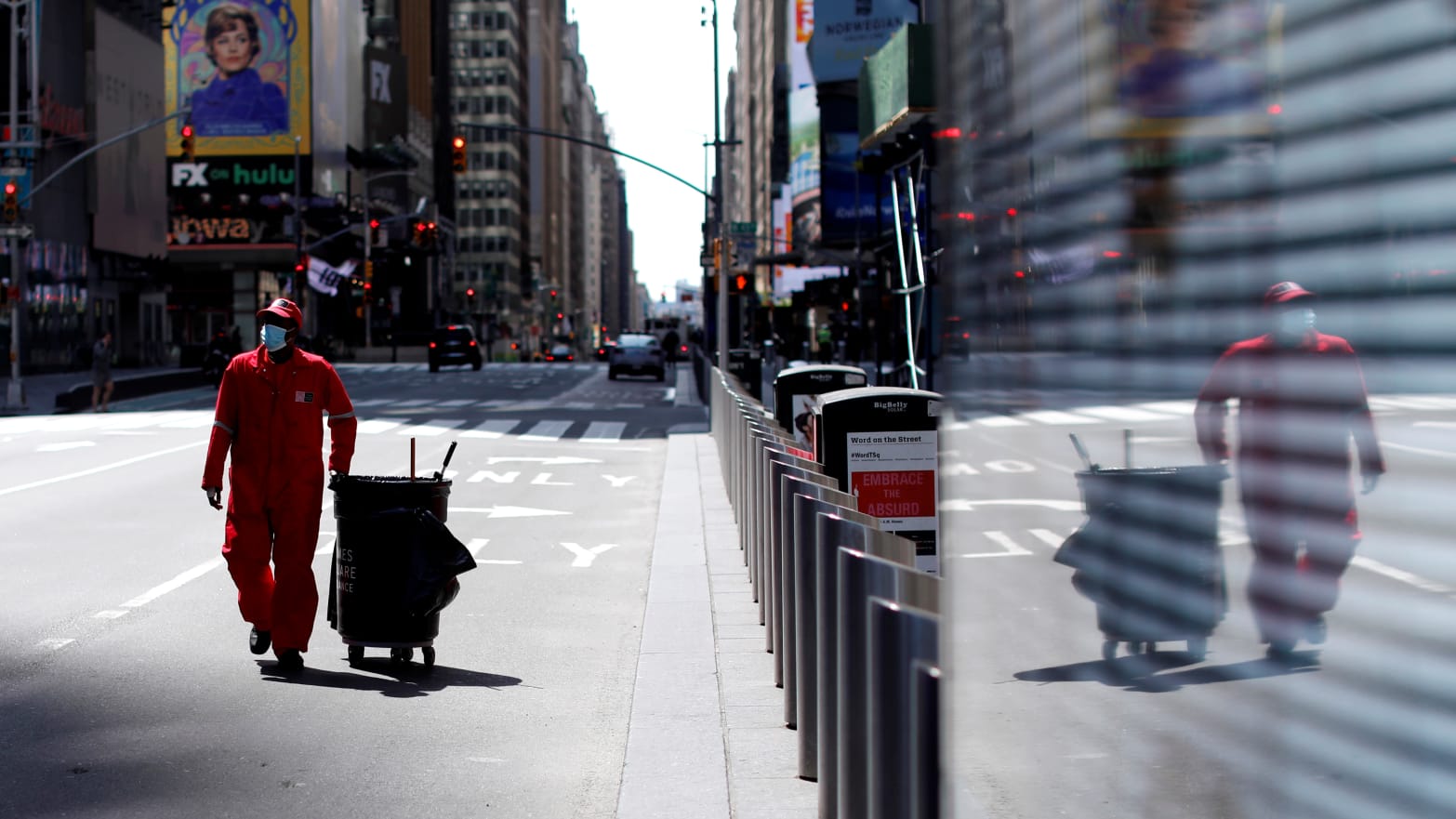New York Gov. Andrew Cuomo said Friday he is “cautiously optimistic” that the state has seen the worst of the coronavirus pandemic as the rate of hospitalizations appeared to plateau and the number of patients on ventilators dropped for the first time since the outbreak began last month.
However, New York is still weeks away from returning to normal life, Cuomo said, as re-opening the state will rely on the development of “millions and millions” of antibody tests that don’t exist.
“We are cautiously optimistic we are slowing the rate of infections,” Cuomo said during a Friday press conference in Albany, stressing that residents need to continue to be vigilant about social distancing because “what we do today will determine the infection rate two or three days from now.”
Deborah Birx, the White House coronavirus task force response coordinator, said on Friday that other metro areas across the U.S.—including New Orleans, Denver and much of New Jersey, Connecticut and Rhode Island—are also starting to flatten the curve.
Despite the uplifting news, the Empire State continues to see a high death toll—although the 777 deaths overnight was slightly lower than the previous day. To date, more than 7,844 people have died and 161,807 more are infected. “As someone who searches for solace in all this grief, the leveling off in lives lost is a somewhat hopeful sign,” Cuomo said.
The rate of hospitalizations is decreasing and the rate of ICU admissions was “a negative number” on Friday for the first time since the pandemic began, Cuomo said.
“That means there are fewer people in the intensive care units statewide than there were,” Cuomo said, adding that the high death toll is a result of patients succumbing to the virus after falling sick weeks ago. “The number of lives that have been lost is staggering. The number of lives that have been saved is also staggering,” he said.
New York’s “actual” curve of the pandemic is “much, much lower” than past projections, partly as a result of the state’s quick action to enforce social distancing guidelines and lock down non-essential business, he added.
“Nobody’s been here before,” Cuomo said about the earlier projections that indicated 136,000 New Yorkers would be hospitalized. In reality, he said, over the last 19 days, the number was 18,569. “There is no natural trajectory. The trajectory is the trajectory that we create by our actions.”
Cuomo said state officials are already preparing a “graduate phased process” to re-open the state but it will rely on widespread and “aggressive” antibody testing and diagnostic testing. “It’s not going to be a light switch where you flip this economy like you flip a light switch,” he said.
New York is pushing for testing that will ultimately allow residents who have already had the virus—or are immune to it—to return to public life sooner. Cuomo said, ideally, that every New Yorker would take an antibody or diagnostic test before returning to work, or entering a nursing home or hospital.
The New York State Department of Health has developed a COVID-19 antibody test, and state officials are working with the FDA to get it approved, however New York currently has capacity to do only 300 tests per day.
New York needs “millions and millions of [tests] and we need them in a matter of weeks, not months,” Cuomo said. He called on the Trump administration to use the Defense Production Act to compel companies to make tests because he didn’t think the private sector could do it on their own.
“We need a tremendous, mind-boggling increase in volume quickly,” he said, adding that he wanted enough tests for New York’s 19 million residents. “We need an unprecedented production where the government can produce these tests in the millions.”
William Haseltine, president of the global health think tank ACCESS Health International, who recently chaired the U.S.-China Health Summit in Wuhan, explained to The Daily Beast that, although an antibody test has been approved by the FDA, it only tests patients to see if they have any strand of the coronavirus, not the specific one currently surging across the world.
That means that even if most people who’ve survived the virus are able to develop an effective immune response to it—which is still uncertain—the current antibody tests being rolled out in the U.S. might not be able to tell if you’ve recently had COVID-19 or had an unrelated cold, said Haseltine.
“One third of colds are coronavirus,” he added. “This test isn’t going to be foolproof.”
Ultimately, he said, antibody testing should be paired with widespread and affordable diagnostic tests—the ones used to determine if someone currently has the virus—for which access has steadily improved in the past several weeks.
The key to safely reopening any city will require ready access—for all—to diagnostic tests, antibody tests, and contact tracing when infections inevitably pop up.
But before officials can devote their attention to testing, New York still needs to combat the latest overnight surge and relieve hospitals, makeshift morgues, and funeral homes that continue to be overwhelmed by the pandemic’s effects. On Thursday, Cuomo signed an executive order adding additional funeral directors, while the Federal Emergency Management Agency said last week that New York will also receive 250 ambulances, about 500 EMTs and paramedics, and 85 more refrigerated trucks to help with the overload.
So far, 45 refrigerated trucks have been set up across the five boroughs, some of which are already full. A temporary morgue has been erected outside Bellevue Hospital in Midtown Manhattan.
The surge has also forced New York City officials to consider a devastating contingency plan: temporary mass burials of coronavirus patients on Hart Island, the location of the city's potter's field.

Drone pictures show bodies being buried on New York's Hart Island on Thursday.
Lucas Jackson/Reuters
“For decades, Hart Island has been used to lay to rest decedents who have not been claimed by family members,” a city hall spokesperson told The Daily Beast on Thursday. “We will continue using the Island in that fashion during this crisis and it is likely that people who have passed away from COVID who fit this description will be buried on the island in the coming days.”
Drone photos taken by Reuters show several workers clad in hazmat suits placing wooden caskets into mass burial plots in the potter’s field, which has been used by the city for the past 150 years.
On average, about 25 bodies are buried at Hart Island every week by Rikers Island jail inmates, according to the Hart Island Project. Over the last month, the number of bodies that have not been claimed has spiked—prompting an average of 24 burials a day, the New York Department of Corrections said.

The Department of Corrections is dealing with more burials overall, amid the coronavirus disease.
Lucas Jackson/Reuters
Burial operations, a task that typically occurred once a week, have now increased to five days a week. Due to social distancing and safety concerns, city officials have hired contract workers to “perform this important work” instead of inmates, DOC Press Secretary Jason Kersten told The Daily Beast.
Meanwhile, the city’s Office of the Chief Medical Examiner made a policy change to its website on Thursday, stating that the city will only “provide temporary storage of a decedent for up to 14 days.” The website also stated that bodies that are not claimed within the new time frame would be sent to Hart Island.
“As we aim to accommodate the many New Yorkers who have been impacted by the COVID-19 pandemic, the [OCME] will provide temporary storage of a decedent for up to 14 days,” the website states. “We continue to work with families to accommodate their needs during this difficult time.”
A spokesperson for the OCME confirmed that the city burial policy changed on Thursday, adding that the office is “adhering to our standard 14-day OCME storage policy for all cases.”
New York City’s law enforcement is also bouncing back from the pandemic, NYPD Commissioner Dermot Shea said Friday. While the virus has hit the city’s law enforcement hard, 600 uniformed officers are returning back to work after testing positive. While the coronavirus at one time sidelined approximately 20 percent of the 37,000-member force, the NYPD has not yet implemented 12-hour shifts to make up for the lack of personnel.
“We have the reserves, we have the contingency plans,” Shea previously said. To date, the NYPD has lost 12 uniformed members of the force to the virus, and about 1,935 have been infected, according to CNN.
-Reporter Olivia Messer contributed to this report.

